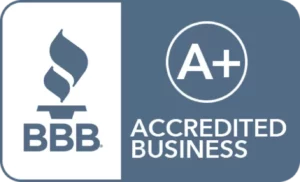The SECURE Act – Setting Every Community Up for Retirement Enhancement, is a major piece of retirement plan legislation. It was passed by the House of Representatives on May 23, 2019. It is expected to pass through the Senate later this year and then signed into law by President Trump. There are a lot of provisions in the bill, but we will focus on the ones that effect IRA plans specifically.
SECURE and Your IRA
What does the SECURE Act mean for your IRA? We’ll talk about each one, mostly good, but one potentially bad. But first, how does an IRA work as it stands right now? Anyone with earned income can contribute to an IRA. There are set limits to how much you can contribute annually. For 2019, you can contribute up to $6,000 if you are under age 50 and $7,000 if age 50 and over. However, you can only contribute as much as you earn in a year. For example, if you only earned $3,000 working a summer job, that’s the max you can contribute.
Traditional IRAs offer a tax deduction, while Roth IRAs have no deduction, but qualified withdrawals are tax-free. Currently, you cannot contribute to a traditional plan once you each age 70 1/2. There is no age restriction for a Roth IRA. Further, once you reach that age, you must start taking Required Minimum Distributions (RMD) from your traditional plans. IRAs can be invested in stocks, bonds, mutual funds and the like. If you have a Self-Directed IRA, you can invest in alternative assets, such as real estate and cryptocurrencies.
What changes will the SECURE Act bring to individual retirement plans?
No More Age Limit for Traditional IRAs
As mentioned, currently there is an age restriction to when you can contribute to a traditional IRA. The SECURE Act will remove that restriction. This will allow one to save in any type of IRA so long as they have earned income. Earned income is usually from wages earned from a job. It may also include combat pay, jury duty, alimony payments and scholarship payments. However, social security benefits, retirement plan distributions and capital gains are not considered earned income. Again, you can only contribute up to your earning income for the year (up to the contribution limit).
Required Minimum Distribution Age
Currently, the age in which you must start taking distributions from traditional plans is 70 1/2. The SECURE Act will push that number back 18 months to 72. That’s more time to 1) contribute to the plan and 2) have your money work for you. The later you can wait to dip into your IRA savings, the better off you will be. Just think what an extra year and a half will do to your balance. Note: Roth IRAs are not subject to RMDs. You may choose to never withdraw from the plan and instead pass it on to your heirs.
Inherited IRAs
Speaking of passing on your IRA to your heirs, there’s a provision in the SECURE Act that may affect your beneficiaries. This is the provision that may not be welcomed by IRA investors. Currently, if you leave your IRA to a non-spouse beneficiary, he and/or she could use their life expectancy to withdraw from the account. This allows them a lifetime of tax-advantaged benefits. The SECURE Act will look to cut that time down to ten years. By doing so, you must take larger distributions, which will also lead to a higher tax bill.
As stated, this is only for non-spouse beneficiaries. Spousal beneficiaries may still assume the IRA as his or her own and continue to utilize the account. A similar act, called RESA, would look to further derail the “Stretch IRA” by limiting the time frame to five years.
Childbirth or Adoption Withdrawals
Currently, there are only a few ways to get funds from your IRA early. If you have excessive medical bills, are a first time home buyer or have higher education expenses, you can tap your IRA penalty-free. If you don’t meet these criteria, you will be hit with a 10% early withdrawal penalty if you are under age 59 1/2. The SECURE Act will add a provision for new parents to help cover expenses.
This will allow parents to withdraw up to $5,000 for qualified childbirth or adoption expenses. You must take the distribution within one year of birth/adoption. The child (if adopted) must be under age 18 or “physically or mentally incapable of self-support.” Also, it does include the adoption of a spouse’s child. All-in-all, it’s a great addition for those looking to offset the high costs of having a child.
Other Provisions of the SECURE Act
Multiple Employer Plans – The Act will look to get rid of the common interest rule and the one bad apple rule. No longer will companies need to be in the same type of business and now, if one employer messes up, the whole MEP will not be disqualified. Small 401(k) plans would be easier to create and cheaper to maintain with an MEP.
Start-up Credit – The Tax credit for new, small business will increase. The hope is to help spur on more individuals to open his or her own business by increasing the tax credit given.
Part-Time Eligibility – This would allow qualified part-time workers to have access to a company 401(k) plan.
Annuities – Annuities would become a better and allowable investment within 401(k) plans.
401(k) Deadline – Currently, a 401(k) must be set up by December 31 to be in effect for that year. The SECURE Act would extend that deadline to the tax filing day plus extensions.
Conclusion
There are some exciting provisions in the SECURE Act. The idea is to further encourage all Americans to save fore retirement. While not all provisions are perfect, the majority should help accomplish this goal. The more incentive we are given, the more we will save for retirement. Every American should put away everything they can for their Golden Years.
If you have questions regarding the SECURE Act, or any IRA legislature, please contact us @ 800.472.1043.











